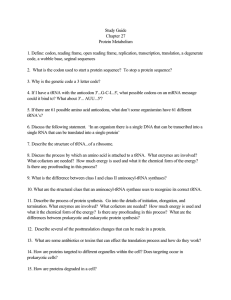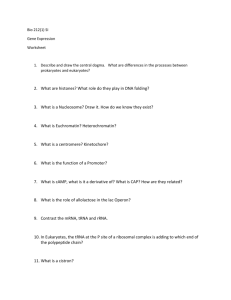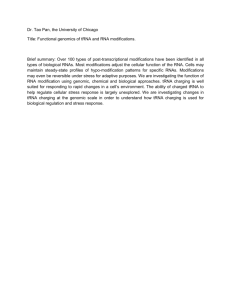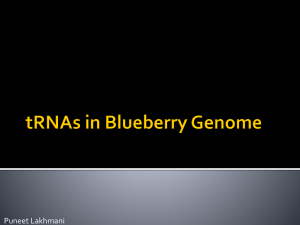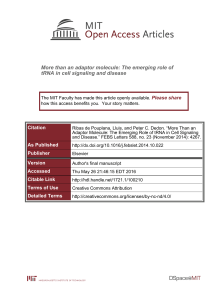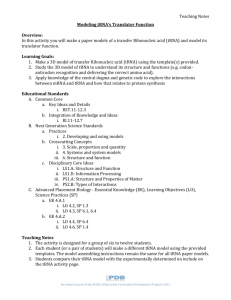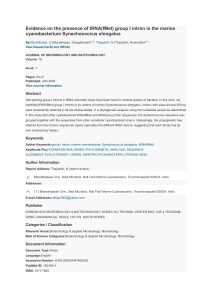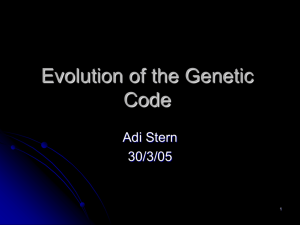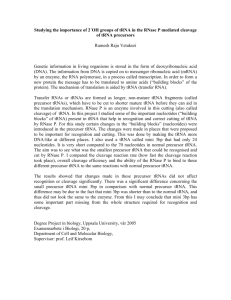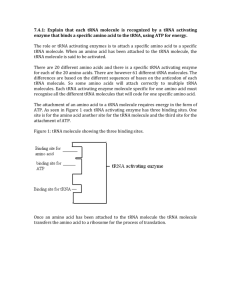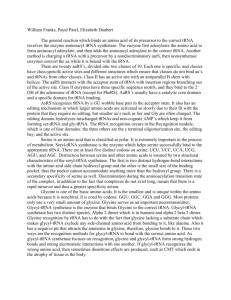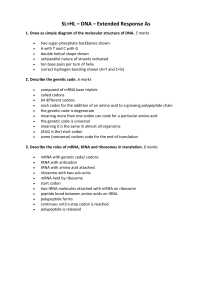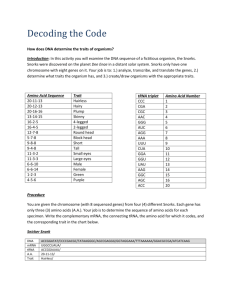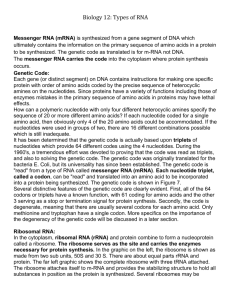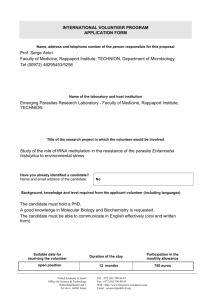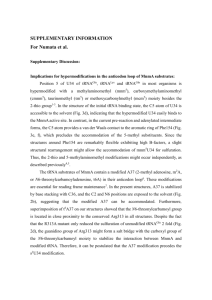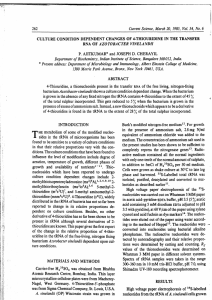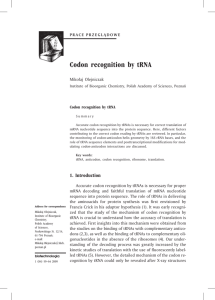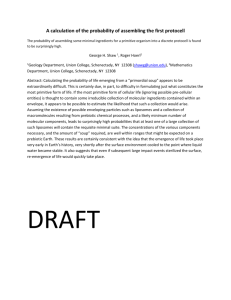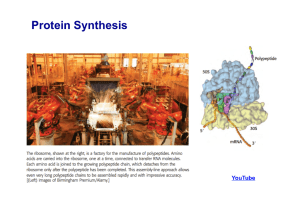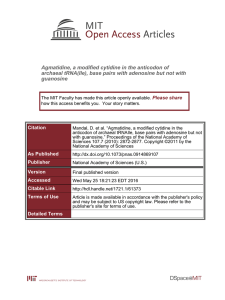Teaching Notes
advertisement
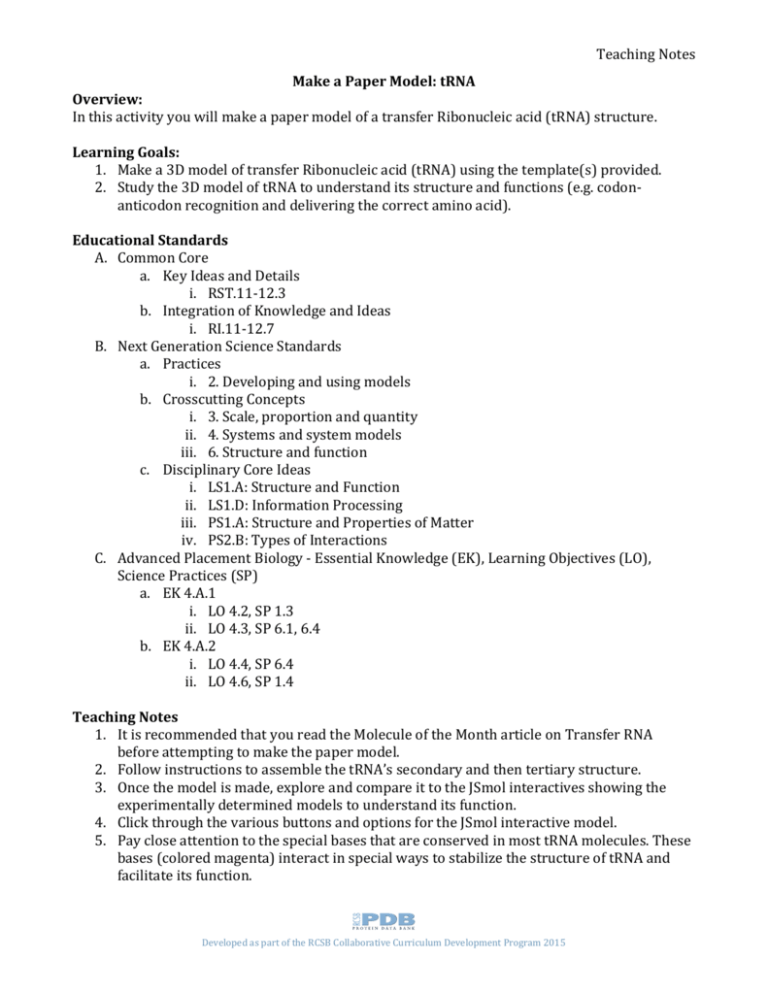
Teaching Notes Make a Paper Model: tRNA Overview: In this activity you will make a paper model of a transfer Ribonucleic acid (tRNA) structure. Learning Goals: 1. Make a 3D model of transfer Ribonucleic acid (tRNA) using the template(s) provided. 2. Study the 3D model of tRNA to understand its structure and functions (e.g. codonanticodon recognition and delivering the correct amino acid). Educational Standards A. Common Core a. Key Ideas and Details i. RST.11-12.3 b. Integration of Knowledge and Ideas i. RI.11-12.7 B. Next Generation Science Standards a. Practices i. 2. Developing and using models b. Crosscutting Concepts i. 3. Scale, proportion and quantity ii. 4. Systems and system models iii. 6. Structure and function c. Disciplinary Core Ideas i. LS1.A: Structure and Function ii. LS1.D: Information Processing iii. PS1.A: Structure and Properties of Matter iv. PS2.B: Types of Interactions C. Advanced Placement Biology - Essential Knowledge (EK), Learning Objectives (LO), Science Practices (SP) a. EK 4.A.1 i. LO 4.2, SP 1.3 ii. LO 4.3, SP 6.1, 6.4 b. EK 4.A.2 i. LO 4.4, SP 6.4 ii. LO 4.6, SP 1.4 Teaching Notes 1. It is recommended that you read the Molecule of the Month article on Transfer RNA before attempting to make the paper model. 2. Follow instructions to assemble the tRNA’s secondary and then tertiary structure. 3. Once the model is made, explore and compare it to the JSmol interactives showing the experimentally determined models to understand its function. 4. Click through the various buttons and options for the JSmol interactive model. 5. Pay close attention to the special bases that are conserved in most tRNA molecules. These bases (colored magenta) interact in special ways to stabilize the structure of tRNA and facilitate its function. Developed as part of the RCSB Collaborative Curriculum Development Program 2015 Teaching Notes Key to Questions asked in “Topics for further exploration” 1. Many different types of base pairs are formed when tRNA folds. These include typical A-U and C-G base pairs in the four stems, and some more unusual interactions when the whole thing folds into the final L shape. Use the model to find a non-standard base pair in one of the four stems, and use the Jmol to explore some unusual base interactions in the folded tRNA. A. C13, G22, m7G46 display a base triplet interaction (highlighted here as 13-22-46) and base pairs G18:(Ψ)55 and G19:C56 (highlighted here as 18-19 and 55-57) 2. What is the sequence of the anticodon in this tRNA? What codon would it read? A. The anticodon sequence in this tRNA is GAA (see the red colored region in the paper model template). This will read the codon, which is complementary and running in the opposite direction – so “UUC”. You can use the genetic code table (below) to see that UUC is the codon for Phe, see the genetic code. Developed as part of the RCSB Collaborative Curriculum Development Program 2015
